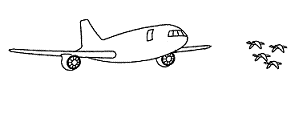Bird Strike Committee Proceedings

Bird Strike Committee-USA/Canada Joint Annual Meeting: 2nd (2000)
Date of this Version
August 2000
Document Type
Article
Abstract
Birds and other wildlife are a serious problem at U.S. airports. Wildlife strikes cost U.S. civil aviation over $300 million per year, based on data from 1990-1998, and the number of reported bird strikes to civil aircraft has increased over 104% during that same time period. The increase in aircraft striking wildlife is due in part to the significant increase of various wildlife populations during the past 30 years. The United States Department of Agriculture, Animal and Plant Health Inspection Service, Wildlife Services (WS) program provides Federal assistance to airports in addressing wildlife hazards to aircraft. To comply with the Government Performance and Results Act (GPRA), WS measured the percent risk reduction achieved by their airport/human safety protection programs. During FY 1999, WS provided assistance to 363 airports in 47 states and Guam. This work includes both technical and direct management assistance. For FY 1999, direct management assistance was performed by WS at 110 airports while technical assistance was provided at 316 airports. The WS goal for its airport work is to increase passenger safety by reducing the risk of aircraft striking wildlife. To calculate percent risk reduction, the risk of a strike is compared from before to after each direct management project. WS met its GPRA goal for FY 1999. The presentation will discuss how goals were determined and how data were analyzed.

